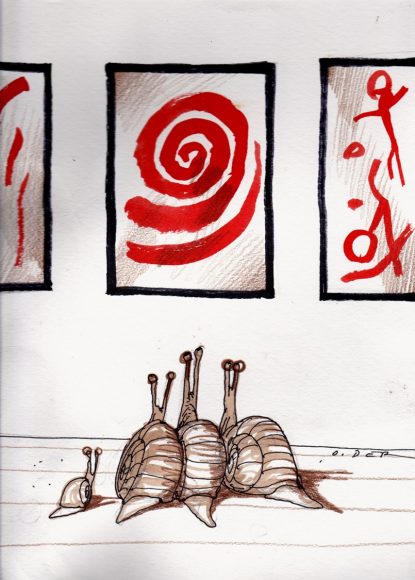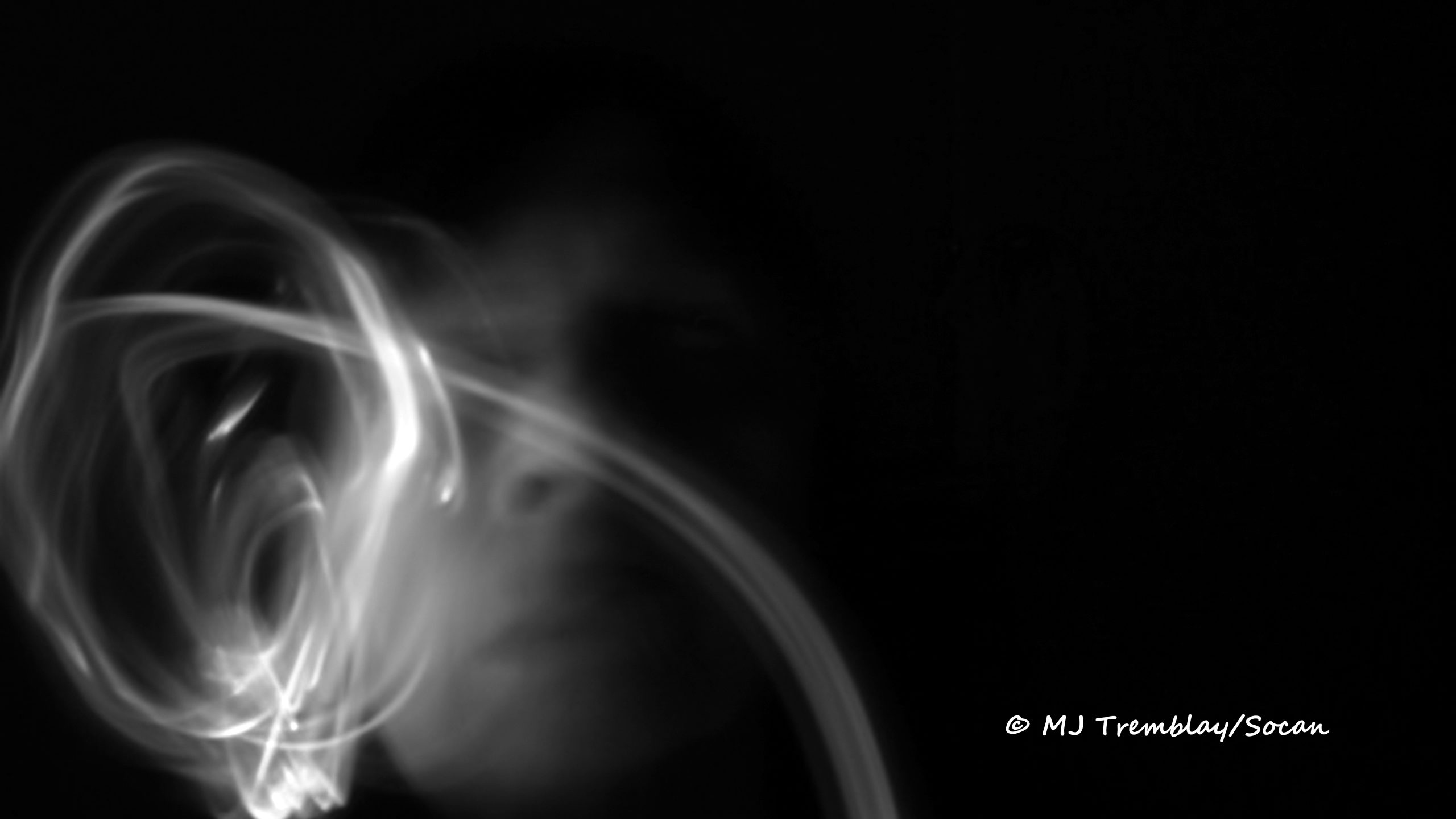“In its encounter with Nature, science invariably elicits a sense of reverence and awe. The very act of understanding is a celebration of joining, merging, even if on a very modest scale, with the magnificence of the Cosmos. And the cumulative worldwide build-up of knowledge over time converts science into something only a little short of a trans-national, trans-generational meta-mind.”
~ Carl Sagan
Would Albert Einstein have come up with such revolutionary, mind-blowing and world-changing theories at his desk at the patent office where he worked, had he not also been a keen music enthusiast and amateur violin player? This rhetorical question posed by the legendary conductor and professional contrarian, Nikolaus Harnoncourt, probably goes to the heart of the matter of the relationship—as strained as all passionate relationships worthy of the name can be—between Science and Art, or, more accurately, even if less euphonic, the sciences and the arts, plural. Whether the counterfactual question is unanswerable or not matters little. What the Austrian count rightly points at is this liaison of the imagination that inevitably binds scientists and artists together. The real issue is not whether the two are in any way related, but rather the extent to which they influence—or are detrimental to—one another.
There are indeed scientifically-minded artists, architects and musicians who have to master enormously complex mathematics; and artistically-sensitive scientists such as Sir William Herschel, who composed symphonies as well as discovering the planet Uranus, and Nobel laureate Santiago Ramón y Cajal, a gifted draughtsman and painter who also fathered modern neuroscience. Not to mention polymaths like Albert the Great, the learned philosopher, theologian and mystic; Leonardo da Vinci, inventor, engineer, painter, architect, musician, cartographer et al.; Benjamin Franklin, philosopher, satirist, physicist, diplomat and statesman; or Albert Schweitzer, physician, musicologist, historian, theologian, missionary and explorer. But they were the exception, even in periods when academic hyper-specialisation did not exist.
However, from mastering the quirks and secrets of perspective in painting (Diego Velázquez) and counterpoint in music (Johann Sebastian Bach) to devising cranes (Filippo Brunelleschi) and scaffolding (Michelangelo) to build impressive works, theoretical knowledge and technical improvements have always gone hand in hand with artistic creation. Hence the availability of proper pigments or the rediscovery of concrete, which allowed the flourishing of painting and architecture during the Renaissance; the existence of pre-modern technical wonders like gigantic pipe organs (not to mention the architectural flying buttresses and pointed arches) that were indispensable for the revolutionary keyboard works of Dieterich Buxtehude and Bach, and even for the birth of polyphony and modern music at the École de Notre Dame.
Let’s take, for instance, cinema, the ultimate art form—the synthesis of all the arts—that grew out of a curious series of technical innovations and has depended on scientific breakthroughs ever since: sound, colour, special effects, 3D, computer-generated imagery (CGI). And it was precisely Cinema, along with new inventions (microphones, amplification, radio, television, stereo, LP, CD, mp3, and streaming technologies), which dethroned the most popular art form until then (the allegedly definitive Gesamtkunstwerk), opera, radically changing vocal and acting techniques for the recording era. The arts then had to react, adapt and transform themselves—for better or worse—to suit specialized audiences, new markets and massive reproduction.
Not so evident, however, are the imaginative processes and aesthetic sensibilities often needed to think outside the box, posit audacious new hypotheses and ask heterodox questions. What drives scientists to wake up in the morning and do their painstakingly hard labour isn’t so evident either, performing countless experiments, taking exact measurements of everything, analysing complex data, and writing tedious papers. Curiosity and a thirst for knowledge are certainly important, but no abstract truth or set of material, efficient causes is a substitute for ethical, psychological or even spiritual meaning. Nor can it provide moral guidance in deciding what would be acceptable to research or to invent.
Aristotle himself, despite his descriptions of the natural human tendency to seek knowledge, and the contemplative, abstract nature of happiness, had to accept our undeniable appetite to follow our emotions and let our imagination loose. While history, for example, provides a certain kind of demonstrable knowledge, he argues, it is only about particular and contingent facts. Poetry, on the other hand—meaning our beaux arts—despite its supra-logical or il-logical qualities, is more truthful insofar as it shows universal truths and provokes the same emotional responses over the centuries. Even Richard Dawkins, another biologist turned philosopher—though remarkably in far less successful a way— has had to concede that a strictly material and metaphysically devoid theory of human existence is not enough to get us through the joys and sorrows, slings and arrows, of life. That is why he dedicated an entire—quite poetical—book, Unweaving the Rainbow (1998), to the idea that the grandeur, rationality and beauty of the universe are important sources of Meaning—or spirituality, as Carl Sagan would put it:
“Spirit” comes from the Latin word “to breathe.” What we breathe is air, which is certainly matter, however thin. Despite usage to the contrary, there is no necessary implication in the word “spiritual” that we are talking of anything other than matter (including the matter of which the brain is made), or anything outside the realm of science. On occasion, I will feel free to use the word. Science is not only compatible with spirituality; it is a profound source of spirituality. When we recognize our place in an immensity of light years and in the passage of ages, when we grasp the intricacy, beauty and subtlety of life, then that soaring feeling, that sense of elation and humility combined, is surely spiritual. So are our emotions in the presence of great art or music or literature, or of acts of exemplary selfless courage such as those of Mohandas Gandhi or Martin Luther King Jr. The notion that science and spirituality are somehow mutually exclusive does a disservice to both.
And speaking of the universe, it is important to recall how the most romantic of human endeavours, the space race, was spawned and fuelled by science fiction. Ever since Lucian of Samosata, Dante, Johannes Kepler, Washington Irving, Hans Christian Andersen, Jules Verne and H. G. Wells imagined a journey to the moon, creating a vast array of work extending all the way to Georges Méliès’ technically prodigious A Trip to the Moon (1902) and Fritz Lang’s impressive Frau im Mond (1929), pioneering scientists like physicists Konstantin Eduardovich Tsiolkovski, Hermann Oberth, and Robert H. Goddard have been drawing inspiration from fiction to lay down the theoretical basis for rocketry and space travel.
Born a generation later, the geniuses behind the space race, Soviet engineer Sergei Pavlovich Koroliov and German physicist Wernher von Braun, dared to imagine the unimaginable years ahead of their times, fighting bureaucratic pettiness and scientific close-mindedness. The latter in particular had to combat scepticism and underfunding by turning to comic strips, sci-fi magazines, television documentaries and Walt Disney cartoons, recruiting youngsters and their parents to his Quixotesque cause. While Koroliov had to fight Communist Party officials, Von Braun’s challenge was to sway public opinion and persuade the electorate in a democracy. Yet both devoured every text, scientific or otherwise, about space travel that they could lay their hands on.
That may explain the perennial emphasis of NASA, a publicly funded, politically accountable agency, on public relations, media interest, good publicity and poetic sex appeal. NASA may be the ultimate example of a positive working relationship between science and art… and not just because programmes like the Apollo moon landings, the Hubble Space Telescope and the International Space Station were multi-billion-dollar—non-profit, non-military—scientific quests with perhaps no immediate technological or scientific utility, undertaken with the sole and ambiguous aim of achieving international prestige… the modern equivalent of the classic quest for “glory.” It’s hard to recall anything more ennobling or romantic.
Let’s think about Apollo VIII astronauts Frank Borman, James A. Lovell and William Anders, reading the first verses from the Book of Genesis while orbiting the moon on Christmas Eve 1968. And what about the wonderful nomenclature used by NASA: space programs, rockets and crafts named after mythological Mercury, Gemini, Apollo, Saturn, Jupiter, Artemis and Odyssey? And the telescopes and probes named after great scientists such as Cassini, Hubble, Kepler, Spitzer, Herschel, Galileo and Huygens?
Let’s think as well about the immortal metaphor from the unlikeliest of poets, cool-headed Neil Armstrong in 1969 (“one small step for man, and one giant leap for mankind”), and the highly significant aluminum plaque with the names of all the fallen astronauts at the time, laid on Mons Hadley by the crew of Apollo XV in 1971.
Let’s not forget the artists’ impressions of galaxies and nebulae commissioned by the Agency, and the millions of hours and kilometres of footage taken with the most advanced cameras to record such initiatives for all Mankind—like the gorgeous, quasi-religious, homonymous 1989 documentary by Al Reinert, sponsored by NASA. Let’s think about the most poetic of them all, the message in a bottle carried by both Voyager probes in the form of a golden gramophone record containing music carefully selected by a committee presided by Carl Sagan himself—music by Bach, Mozart, Beethoven, Stravinsky, Chuck Berry, and Blind Willie Johnson, as well as many sound recordings of the earth and its animals, examples of human voices and languages, photographs of terrestrial landscapes, and information on human cultures and their sciences and arts.
Not only does Science rely just as much as Art on analogy and narration for its communication, it too must have the capacity to inspire and arouse human emotions: ambition and humility, courage and kindness, competition and cooperation. When truly noble and pure, Science reflects the majesty of the pyramids. It possesses the same awesome subtlety of medieval cathedrals and zen gardens. It speaks the same truth as Shakespeare’s Hamlet, Bach’s Matthäus Passion, Michelangelo’s David and Picasso’s Guernica, just as all this great art embodies the complexity of super computers, hadron colliders, nuclear submarines or surgical robots. Both Science and Art are, after all, the truest expression of those rarest of creatures: those self-aware and self-reflecting masses of biological matter that constitute human beings.
__________________________
* Oleg Dergachov is an internationally recognized Canadian cartoonist who has won over 130 international prizes and awards in 25 countries. His drawings have been published in magazines in over 30 countries, including the Swiss satirical magazine Nebelspalter and the Harvard Business Review.
http://www.cartoongallery.eu/englishversion/gallery/canada/oleg-dergachov/











